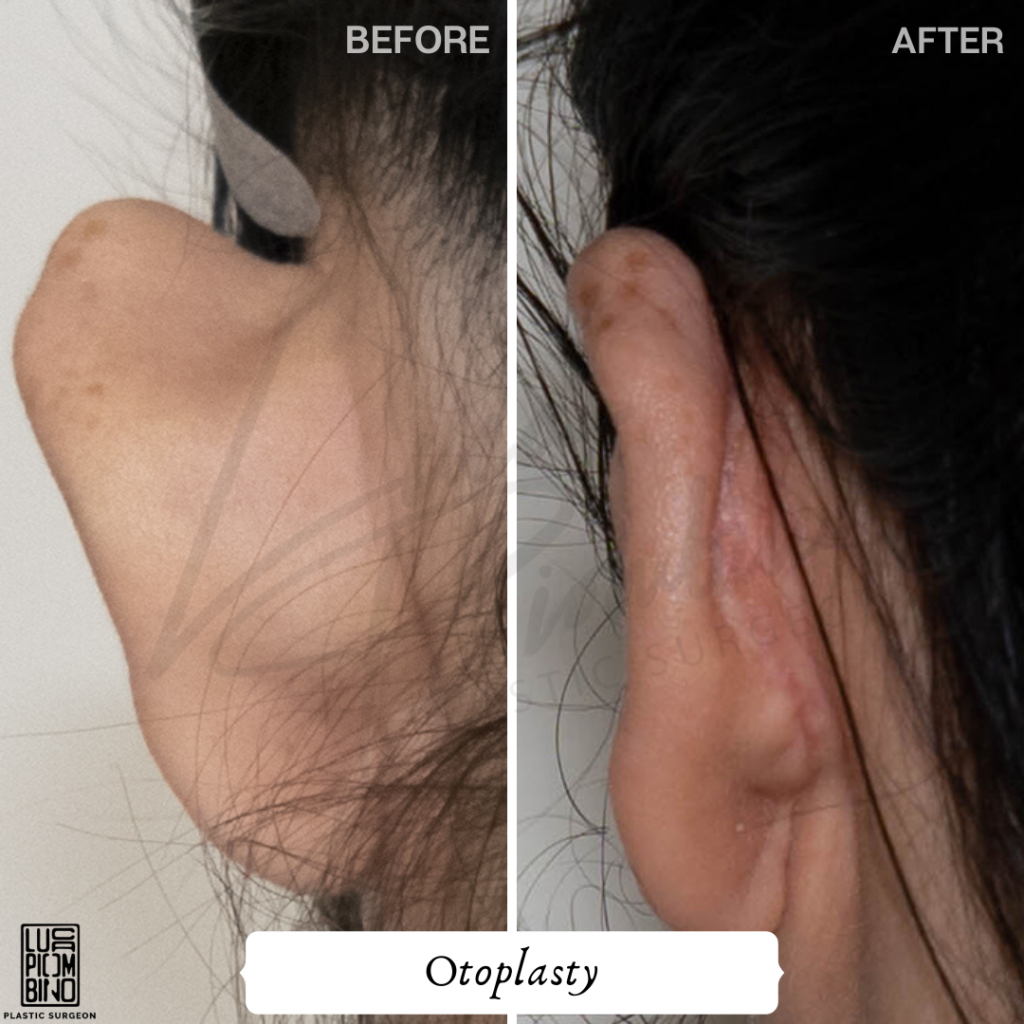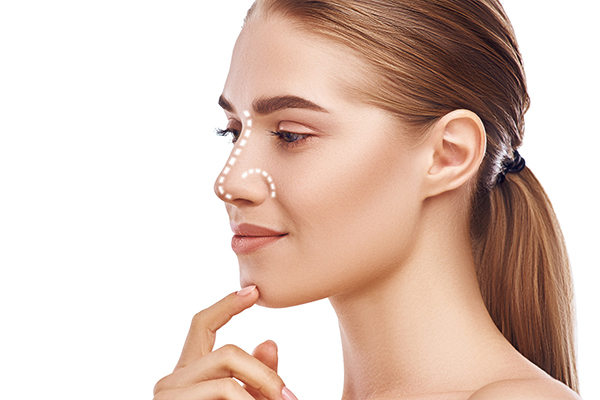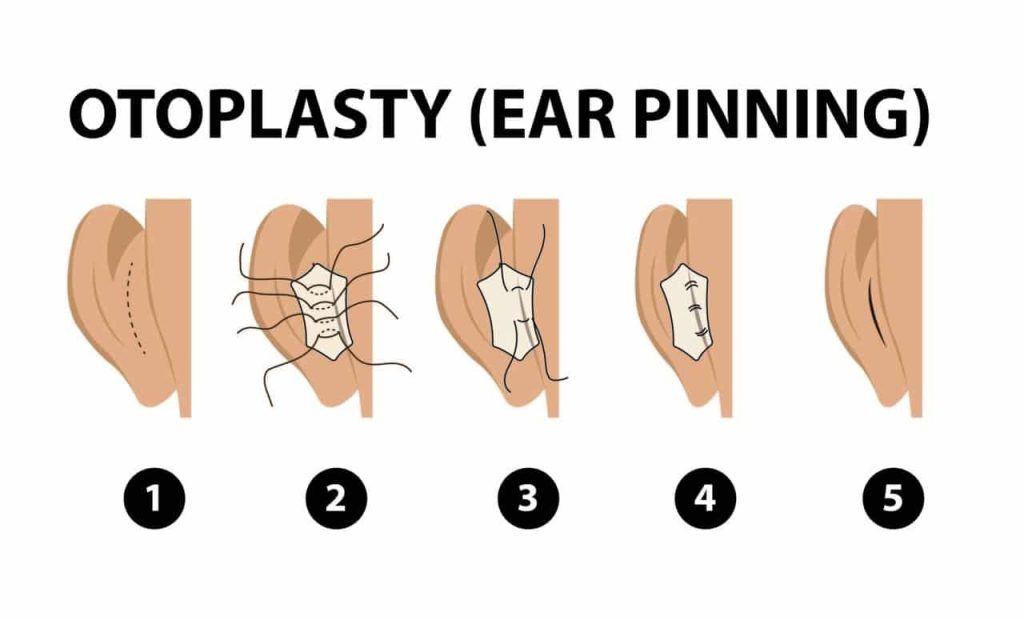
In the pursuit of refined beauty, women are now turning to otoplasty techniques to enhance their elegance. This article presents an insightful exploration of otoplasty, a surgical procedure designed to reshape and reposition the ears, specifically tailored for the sophisticated woman. By delving into the various techniques employed by skilled surgeons, this article aims to provide an informative guide that empowers women to redefine their aesthetic appeal with grace and poise.

Choosing the Right Otoplasty Technique
Otoplasty, also known as ear surgery, is a cosmetic procedure that aims to improve the appearance of the ears. Whether you are considering otoplasty for yourself or your child, choosing the right technique is crucial for achieving desired results. In this article, we will explore the various otoplasty techniques available and provide insights on how to determine the ideal technique for you or your loved one.
Understanding Otoplasty
Otoplasty is a surgical procedure that can address a range of ear abnormalities and improve the overall appearance of the ears. It is commonly used to correct protruding or misshapen ears, ear asymmetry, and other ear deformities. Otoplasty can be performed on individuals of all ages, but it is often recommended for children between the ages of four and fourteen when the cartilage is more pliable.

Consultation and Assessment
Before undergoing otoplasty, a consultation and assessment with a qualified plastic surgeon is essential. During this initial appointment, the surgeon will evaluate your ears, discuss your goals and expectations, and determine your eligibility for the procedure. They will also explain the available techniques and advise on the most suitable one for your specific needs.
Determining the Ideal Technique
The ideal otoplasty technique may vary depending on the individual’s unique ear anatomy, desired outcome, and surgeon’s expertise. Some factors that may influence the choice of technique include the severity of the ear deformity, the thickness of the ear cartilage, and the patient’s preference for a specific surgical approach. Let’s explore the traditional and innovative otoplasty techniques to get a better understanding of the options available.
Traditional Otoplasty Techniques
Cartilage Reshaping
Cartilage reshaping is a popular technique used in otoplasty to correct ear deformities. It involves making small incisions behind the ear to access the cartilage. The surgeon will then reshape the cartilage to create a more desired ear contour. This technique is particularly effective for addressing prominent or protruding ears and can provide natural-looking results.
Suture Technique
The suture technique, also known as the “Mustarde technique,” is another traditional otoplasty approach. This technique involves creating incisions behind the ear and using sutures to reshape the cartilage and hold it in its new position. The sutures are strategically placed to create or enhance the natural folds and contours of the ear. The suture technique is commonly used for correcting conchal hypertrophy, where the concha (the bowl-shaped part of the ear) appears oversized or protruding.
Cartilage Incision and Reshaping
In cases where the ear deformity is more complex, the surgeon may opt for a cartilage incision and reshaping technique. This technique involves making incisions within the ear cartilage to access and reshape it directly. By strategically removing or rearranging the cartilage, the surgeon can improve the overall shape and symmetry of the ear. This technique may be recommended for correcting congenital ear deformities or severe asymmetry.
Innovative Otoplasty Techniques
Non-Invasive Otoplasty
Non-invasive otoplasty, also known as ear molding, offers a non-surgical alternative for minor ear deformities. This technique involves using customized ear molds or splints to reshape the ear cartilage gradually. The molds are applied to the ear and worn for several weeks to achieve the desired result. Non-invasive otoplasty is most effective when started at a young age, commonly within the first few weeks of a newborn’s life.
Endoscopic Otoplasty
Endoscopic otoplasty is a more minimally invasive technique that utilizes a small camera and specialized instruments to correct ear deformities. With the assistance of an endoscope, a plastic surgeon can access and reshape the cartilage through small incisions. This technique offers enhanced visibility and precision, allowing for more accurate contouring of the ear. Endoscopic otoplasty is a suitable option for select patients with less severe ear deformities.
Laser Assisted Otoplasty
Laser assisted otoplasty is a cutting-edge technique that combines the use of laser technology with traditional otoplasty methods. The laser is used to make precise incisions in the cartilage, minimizing trauma and scarring. It also facilitates better contouring and shaping of the ear. This technique offers the potential for reduced recovery time and increased patient satisfaction. Laser assisted otoplasty is particularly beneficial for patients seeking a more precise and refined outcome.

Combining Otoplasty with Complementary Procedures
In some cases, otoplasty may be combined with other cosmetic procedures to achieve a harmonious overall result. Let’s explore a few complementary procedures commonly combined with otoplasty.
Rhinoplasty
Combining otoplasty with rhinoplasty, also known as a nose job, can help create balance and symmetry in facial features. By addressing both the ears and the nose, this combination procedure can enhance the overall aesthetics of the face.

Face and Neck Lifts
For individuals seeking a more comprehensive rejuvenation, combining otoplasty with face and neck lifts can provide remarkable results. These procedures address signs of aging in the face and neck, while otoplasty focuses on correcting ear-related concerns.

Blepharoplasty
Blepharoplasty, or eyelid surgery, can be a suitable addition to otoplasty for those looking to address both their ears and eyelids. The combination of these procedures can provide a harmonious transformation, improving the appearance of both the ears and the eyes.

Anesthesia Options for Otoplasty
Choosing the right anesthesia option is an important consideration when undergoing otoplasty surgery. The anesthesia choice will depend on factors such as the extent of the procedure, the patient’s age, and their overall health. Here are the three common anesthesia options for otoplasty:
Local Anesthesia
Local anesthesia is commonly used for otoplasty procedures. It involves the injection of medication to numb the specific area being treated, ensuring the patient remains comfortable and pain-free throughout the surgery. This option is often preferred for less invasive otoplasty techniques.
General Anesthesia
General anesthesia is used for more complex or extensive otoplasty procedures. It involves administering medication through an IV to induce a state of unconsciousness. Under general anesthesia, the patient is completely asleep and unaware throughout the surgery. This option allows for a painless and stress-free experience.
Sedation
Sedation is a lighter form of anesthesia often used in combination with local anesthesia. It involves administering medication to induce a relaxed and drowsy state. While the patient remains conscious, they may have little to no memory of the procedure. Sedation is suitable for otoplasty procedures that require a higher level of comfort.
Preparing for Otoplasty Surgery
Once you have chosen the ideal otoplasty technique and anesthesia option, it is essential to adequately prepare for the surgery. Here are some key steps to follow:
Medical Evaluation
Before undergoing otoplasty, your surgeon will conduct a thorough medical evaluation. This evaluation aims to ensure you are in good health and fit for surgery. The surgeon may request blood tests, review any existing medical conditions or medications, and discuss any potential risks or complications. Following their advice and instructions is crucial for a safe and successful procedure.
Discussing Goals and Expectations
During the pre-operative consultation, it is important to communicate your goals and expectations with your surgeon. Sharing what you hope to achieve through otoplasty will enable your surgeon to tailor the procedure to your desired outcome. It is essential to have realistic expectations and to understand the limitations of the procedure.
Preparing for Recovery
Preparing for the recovery period is crucial to ensure a smooth healing process. Your surgeon will provide detailed instructions on how to care for your ears post-surgery, including wound care, medication usage, and activity restrictions. It is vital to follow these instructions diligently to promote proper healing and minimize the risk of complications.

The Otoplasty Procedure
On the day of your otoplasty surgery, you can expect the following steps to be taken:
Marking the Incision Sites
Before the surgery begins, the surgeon will carefully mark the incision sites on the back of your ear. These marks serve as a guide during the procedure, ensuring accuracy and precision.
Administering Anesthesia
Once the markings are complete, the anesthesia chosen for your procedure will be administered. Whether it is local anesthesia, general anesthesia, or a combination with sedation, the chosen anesthesia option will provide comfort and pain relief during the surgery.
Performing the Otoplasty Technique
Using the chosen otoplasty technique, the surgeon will proceed to reshape the cartilage and correct the ear deformity. This step requires skill, precision, and meticulous attention to detail to achieve the desired outcome.
Closing the Incisions
Once the desired reshaping and contouring of the ear have been achieved, the surgeon will carefully close the incisions using sutures. The sutures are strategically placed to create or enhance the natural folds and contours of the ear. The surgeon will ensure that the incisions are closed neatly and aesthetically.
Recovering from Otoplasty
Following otoplasty surgery, a proper recovery plan is essential to ensure optimal healing and minimize discomfort. Your surgeon will provide you with detailed post-operative care instructions. Here are some key aspects of the recovery process:
Post-Operative Care Instructions
Your surgeon will provide instructions on how to care for your incisions, including how to clean and dress them. It is important to follow these instructions diligently to reduce the risk of infection and promote proper healing. Your surgeon will outline any activity restrictions and advise on when to follow up for a post-operative evaluation.
Managing Discomfort and Swelling
Some discomfort and swelling are normal after otoplasty surgery. Your surgeon may prescribe pain medication to alleviate any pain or discomfort during the initial recovery period. Applying cold compresses or ice packs can also help reduce swelling. It is crucial to avoid any activities or habits that may put pressure or strain on the ears during the healing process.
Resuming Normal Activities
The recovery period after otoplasty surgery varies from patient to patient. Your surgeon will advise you on when it is safe to resume daily activities, including work, exercise, and wearing certain accessories like glasses or headphones. It is important to follow your surgeon’s guidelines to ensure a smooth recovery and optimal results.

Potential Risks and Complications
Like any surgical procedure, otoplasty carries some risks and complications. However, with a skilled surgeon and proper post-operative care, these risks can be minimized. Here are a few potential risks associated with otoplasty:
Infection
Infections can occur following any surgical procedure. It is essential to keep the incision sites clean and follow the recommended wound care instructions to reduce the risk of infection. Should any signs of infection, such as increased pain, redness, or discharge, occur, it is crucial to contact your surgeon promptly.
Blood Clots
While rare, the formation of blood clots is a potential complication of otoplasty. Proper post-operative care, including mobility and activity guidelines, can help minimize the risk of blood clots. It is important to follow your surgeon’s instructions on movement and exercise during the recovery period.
Scarring
Scarring is a normal part of the healing process after otoplasty surgery. However, a skilled surgeon will make incisions in discreet locations behind the ear to minimize visible scarring. Following proper post-operative wound care can also help promote minimal scarring.
Choosing the Right Surgeon
Selecting the right surgeon for your otoplasty procedure is critical. Here are some key factors to consider when choosing a surgeon:
Board Certification and Experience
Ensure your surgeon is board-certified in plastic surgery and has extensive experience performing otoplasty. Board certification is a testament to a surgeon’s expertise and adherence to high professional standards.
Viewing Before and After Photos
Reviewing before and after photos of the surgeon’s previous otoplasty patients can provide insights into their skills and aesthetic outcomes. This can help you assess whether the surgeon’s results align with your expectations.
Patient Testimonials
Reading testimonials and hearing from previous otoplasty patients can help you gauge the surgeon’s professionalism, bedside manner, and overall patient satisfaction. Take the time to research and find a surgeon with positive reviews and a solid reputation.
In conclusion, choosing the right otoplasty technique requires careful consideration and consultation with a qualified plastic surgeon. Understanding the available traditional and innovative techniques, as well as the potential risks and complications, is crucial for making an informed decision. By selecting an experienced surgeon and following proper post-operative care, you can achieve the desired aesthetic outcome and enhance your overall appearance. Remember, otoplasty is a personal decision, and it is essential to have realistic expectations and prioritize your safety and well-being throughout the process.




